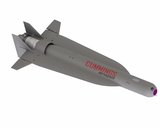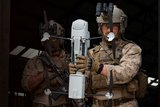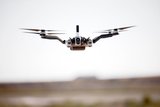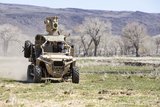IDEF 2011: Bayraktar tactical UAV nears production
Among the various indigenously-designed UAVs on display at the IDEF exhibition in Istanbul from 10 to 13 May was the Bayraktar tactical UAV, which company officials are confident is nearing serial production.
The exhibition marked the public unveiling of the tactical UAV, which was selected by the Turkish Land Forces Command in 2010 following successful flight demonstrations the previous year.
Baykar Machinery general manager Haluk Bayraktar told Shephard that the prototype phase was now completed and contract details were being finalised for an 18 aircraft order.
He said once the contract was signed, which was expected in coming months, first deliveries of the production aircraft would occur in 20 months.
The Bayraktar tactical UAV has been developed under a joint venture between Baykar and the Kale Group. The completely self-funded project gathered engineers from a variety of disciplines in order to develop the UAV’s critical technologies.
Bayraktar said that the aircraft is capable of autonomous taxi, take-off and landing through onboard sensor fusion algorithms. In the event communications with the UAV are broken, the aircraft will automatically return home and land – although Bayraktar noted that the system employed a triple digital downlink.
While the company used a self-developed EO-IR payload for the flight tests and demonstration, the system that would be integrated with the in-service UAV was still being determined.
The Bayraktar, which is 5.5m long and has a wingspan of 9m, has a stated endurance of 10 hours, an operational altitude of 18,000 feet, a maximum take-off weight of 450kg, and a cruise speed of 80 knots.
Also on display at the IDEF exhibition were the Bayraktar mini-UAV and Malazgirt mini unmanned helicopter system as well as associated portable ground control stations.
The Malazgirt, which features a gas engine, has a rotor span of 1.8m, an endurance of 80 minutes and an operational range of 15km. It has been designed to carry an IR/day camera payload at 2000 feet and also employs autonomous take-off and landing, and waypoint navigation as well as autopilot assisted joystick control mode.
Related Programmes in Defence Insight
More from Uncrewed Vehicles
-
![Cummings Aerospace showcases Hellhound loitering munition designed for US Army’s LASSO programme (video)]()
Cummings Aerospace showcases Hellhound loitering munition designed for US Army’s LASSO programme (video)
Cummings Aerospace presented its turbojet-powered Hellhound loitering munition at SOF Week 2025, offering a man-portable solution aligned with the US Army’s LASSO requirements.
-
![SOF Week 2025: PDW unveils attritable FPV drone for SOF operations at scale]()
SOF Week 2025: PDW unveils attritable FPV drone for SOF operations at scale
PDW has revealed its Attritable Multirotor First Person View drone at SOF Week 2025, offering special operations forces a low-cost, rapidly deployable platform for strike and ISR missions, inspired by battlefield lessons from Ukraine.
-
![SOF Week 2025: Teledyne FLIR white paper provides guidance on reusable loitering munitions]()
SOF Week 2025: Teledyne FLIR white paper provides guidance on reusable loitering munitions
Teledyne FLIR is highlighting the emerging requirements for 'recoverable and re-usable' loitering munitions across the contemporary operating environment during this week’s SOF Week conference in Tampa, Florida.
-
![SOF Week 2025: Kraken Technology group debuts K3 Scout USV in North America]()
SOF Week 2025: Kraken Technology group debuts K3 Scout USV in North America
High-performance maritime industry player Kraken Technology Group, based in the UK, has used the SOF Week conference in Tampa, Florida this week to debut its K3 Scout uncrewed surface vessel (USV) to the North American market.
-
![Palladyne AI and Red Cat to demonstrate capabilities for autonomous drone swarms to the US military]()
Palladyne AI and Red Cat to demonstrate capabilities for autonomous drone swarms to the US military
Red Cat and Palladyne AI recently conducted a cross-platform collaborative flight involving three diverse heterogeneous drones.
-
Jammer resistant drone designs spark search for countermeasures
The Russia-Ukraine conflict has driven another stage of evolution for drones and the counter measures to defend against them.

























